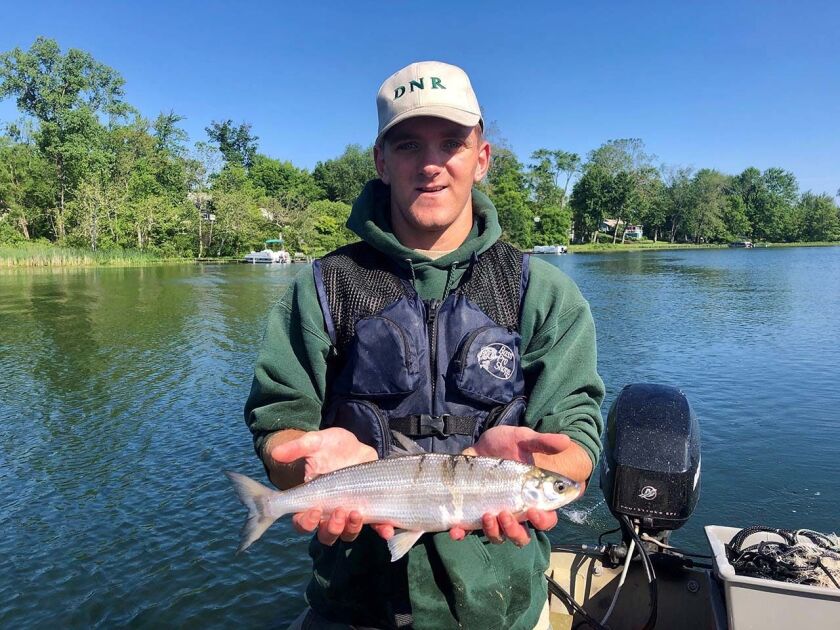Matthew Linn fished for cisco at Crooked Lake with his grandfather while growing up in Columbia City, Ind. When grown and a fisheries research biologist for the Indiana Department of Natural Resources, he had ciscoes fall into his professional domain.
This is an interesting time for ciscoes.
On Dec. 17, Indiana made cisco a state-endangered species, meaning anglers could no longer target, take or possess cisco.
Not that there was a whole lot of fishing effort for them in recent years. From a high of 42 inland lakes holding cisco, Indiana now only has seven inland lakes with cisco and the fight is on to protect those final cisco havens. Cisco were once plentiful enough that until the late 1970s, Indiana would issue tags for gill nets for catching cisco in the fall.
“Our first priority is to preserve the few remaining lakes we have,” Linn said.
Those seven remaining glacial lakes in northern Indiana—Failing Lake (Steuben County), Indiana Lake (Elkhart), North Twin and South Twin lakes (LaGrange), Lake Gage (Steuben), Eve Lake (LaGrange), Crooked Lake (Noble/Whitley)—are the southernmost extent of the species range in North America.
“What is special about those lakes, they have exceptionally good water quality and good clear cool water which ciscoes require to continue to exist,” Linn said.
And the glacial lakes are deep, Crooked is the deepest at 106 feet.
Nearby Geneva Lake is the southernmost lake in Wisconsin with cisco.
When I started doing the outdoors for the Sun-Times, I remember some old-timers would talk about catching lake herring (cisco) from such places as North Avenue pier with their fathers or grandfathers.
Those days are long gone.
“We do not have any ciscoes in our inland waters and I don’t remember ever hearing of them inland,” emailed Vic Santucci, Illinois’ Lake Michigan program manager. “The last cisco captured in Illinois waters of Lake Michigan occurred in 2004, and that was the only one captured in the last 30+ years. Older anglers talk about the cisco fishery around Navy Pier and Burnham Harbor back in the 1950s and into the 1960s, but they are considered extirpated from Illinois waters these days.”
Cisco (Coregonus artedi) are the only native fish from the salmon family found in Indiana waters other than Lake Michigan. Linn recalls catching them to 18 inches and said they have found specimens to 20 inches.
What happened?
“They declined rather precipitously from the 1950s on because of declines in water quality, more specifically cold-water habitat,” Linn said.
Ciscoes require water cooler than 68 degrees and no less than 3 parts per million of oxygen. Linn said one of the reasons those seven lakes continue to hold cisco is that when the thermocline sets up the cooler water below continues to hold enough dissolved oxygen for them to survive.
“In fact, in some of our surveys, we look for the coldest water we can find with 3 parts per million of oxygen or higher,” Linn said.
To preserve the cold-water habitat will require conservation actions of varying sorts in each watershed, such as reducing nutrient and sediment runoff.
“They are unique from the standpoint of they are a good indicator species of good water quality,” Linn said. “That is important to protect our waters. Do the things to benefit ciscoes and it will be beneficial for all species. Everyone values clean water.”
One last word from Illinois.
“The Illinois DNR is interested in reintroducing cisco to the southern basin of Lake Michigan to diversify the open-water prey fish community,” Santucci emailed. “If reintroduction was successful, an added benefit would be reestablishing a seasonal sport fishery for shore anglers.”
For more on cisco in Indiana, visit wildlife.IN.gov/10438.htm.







